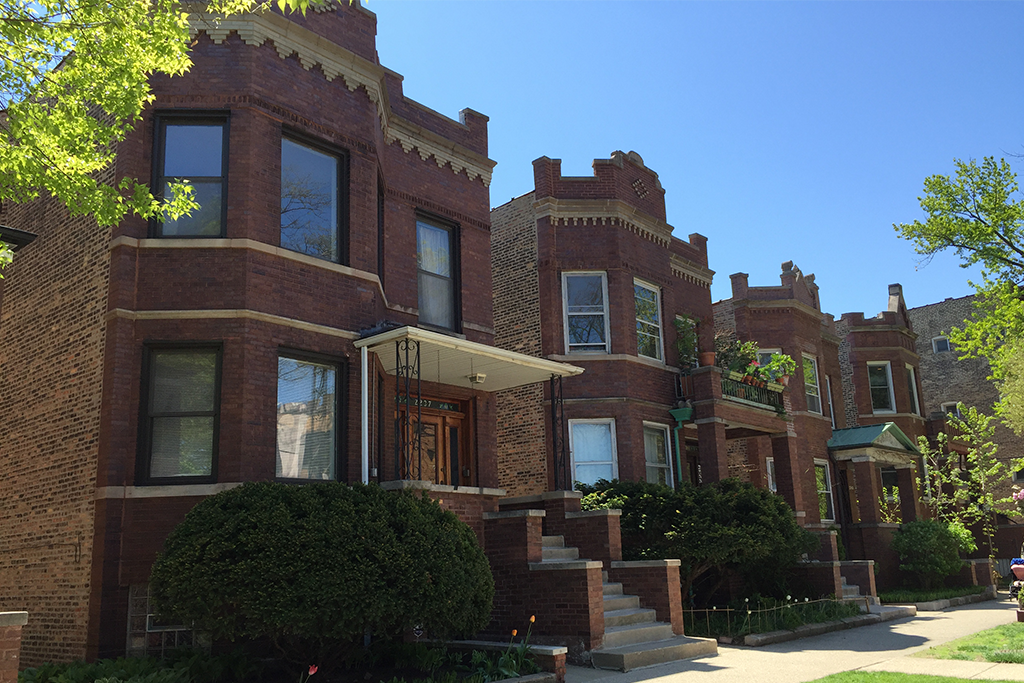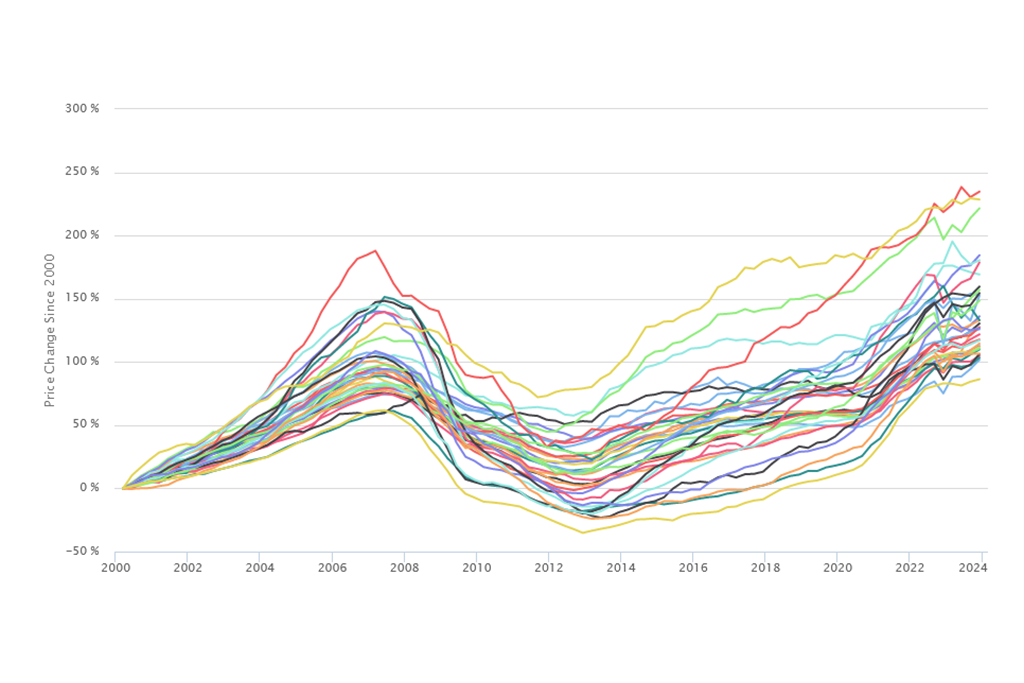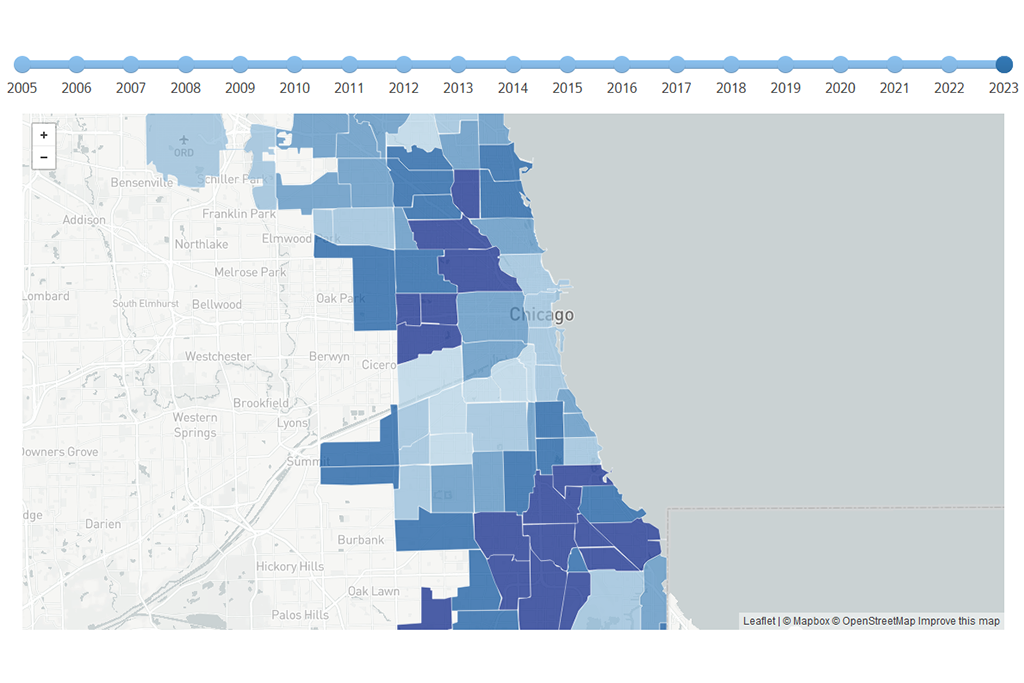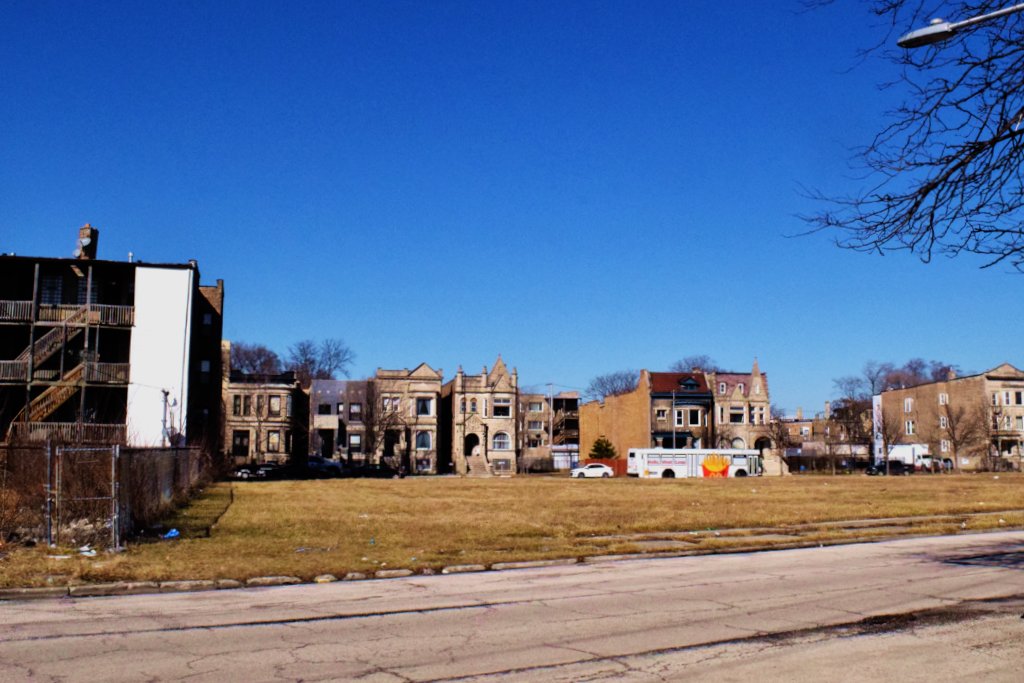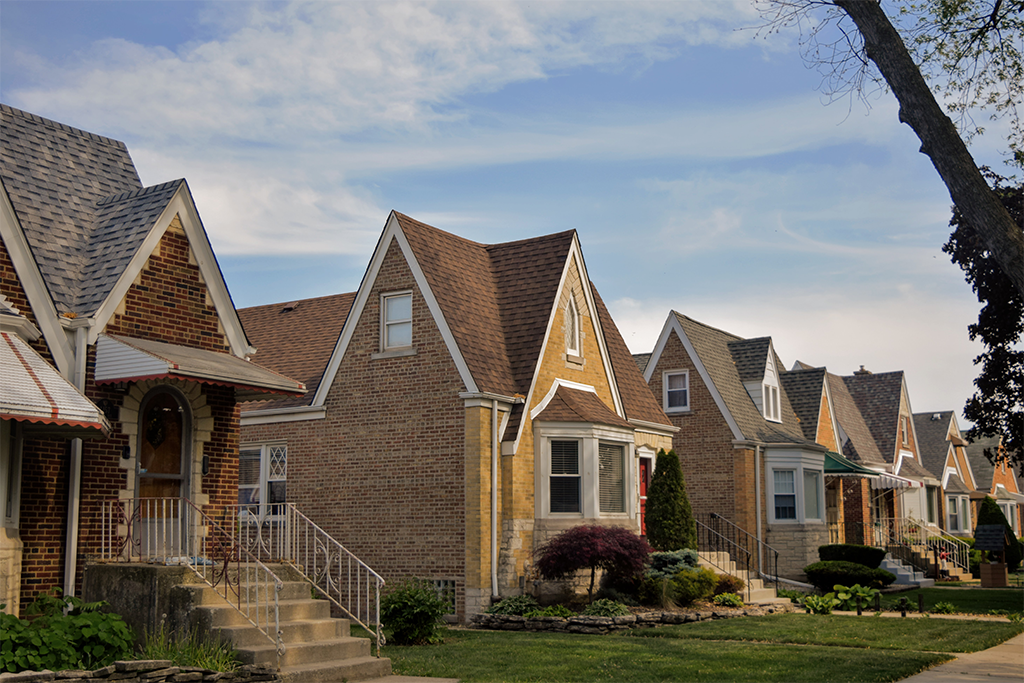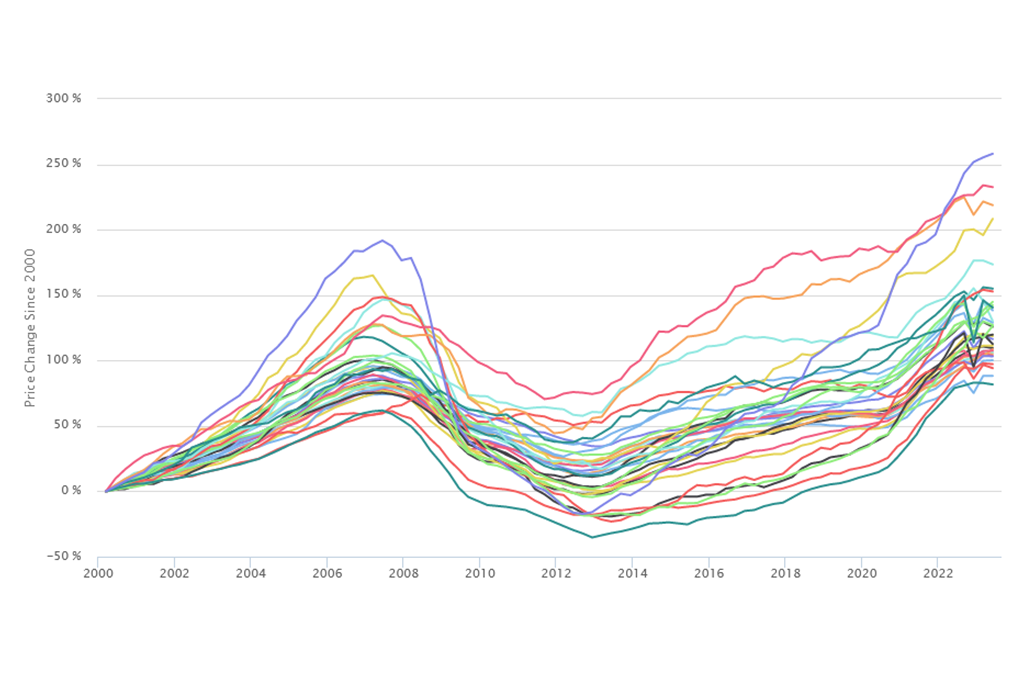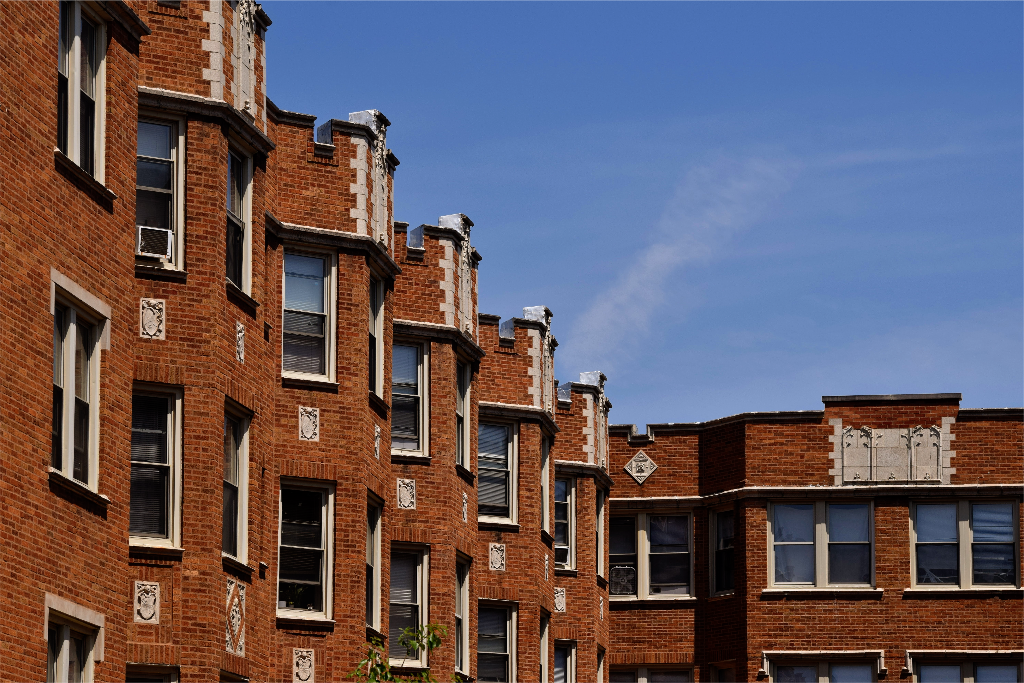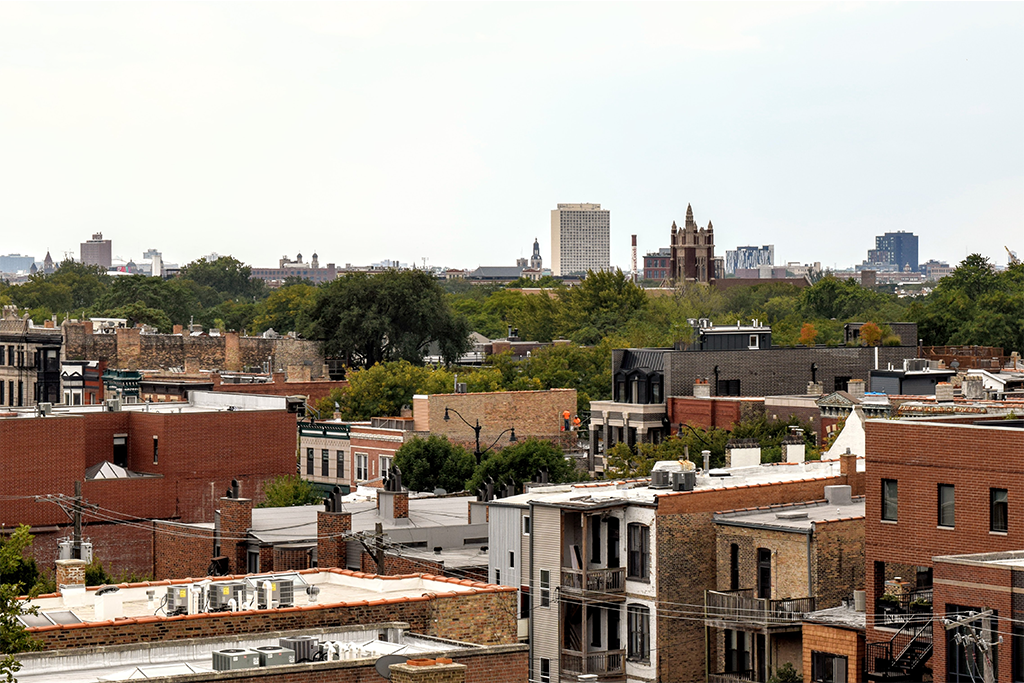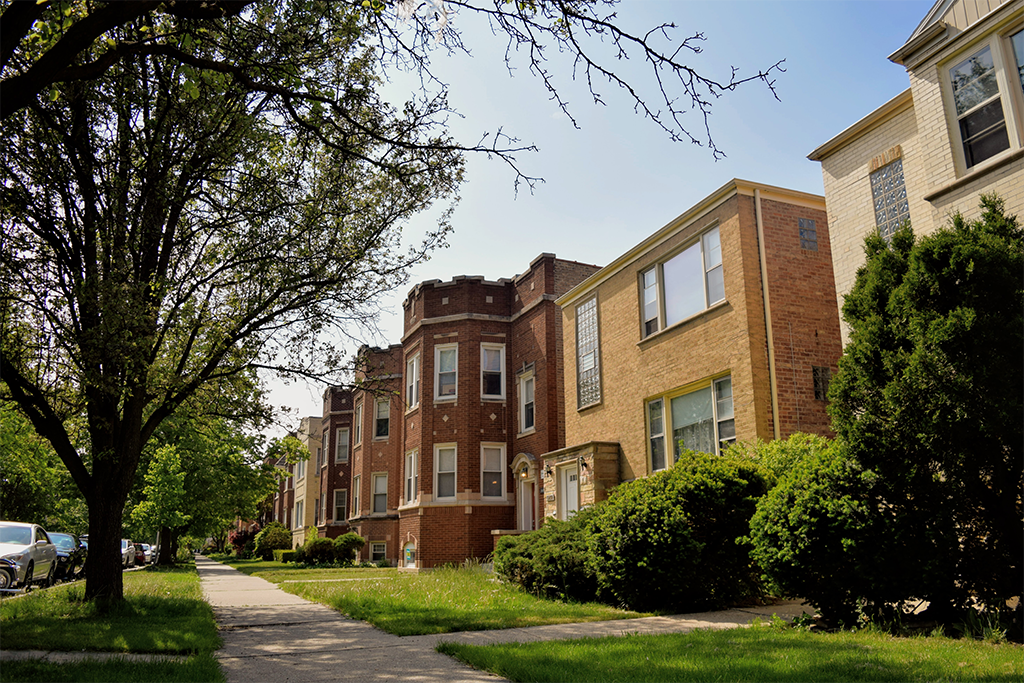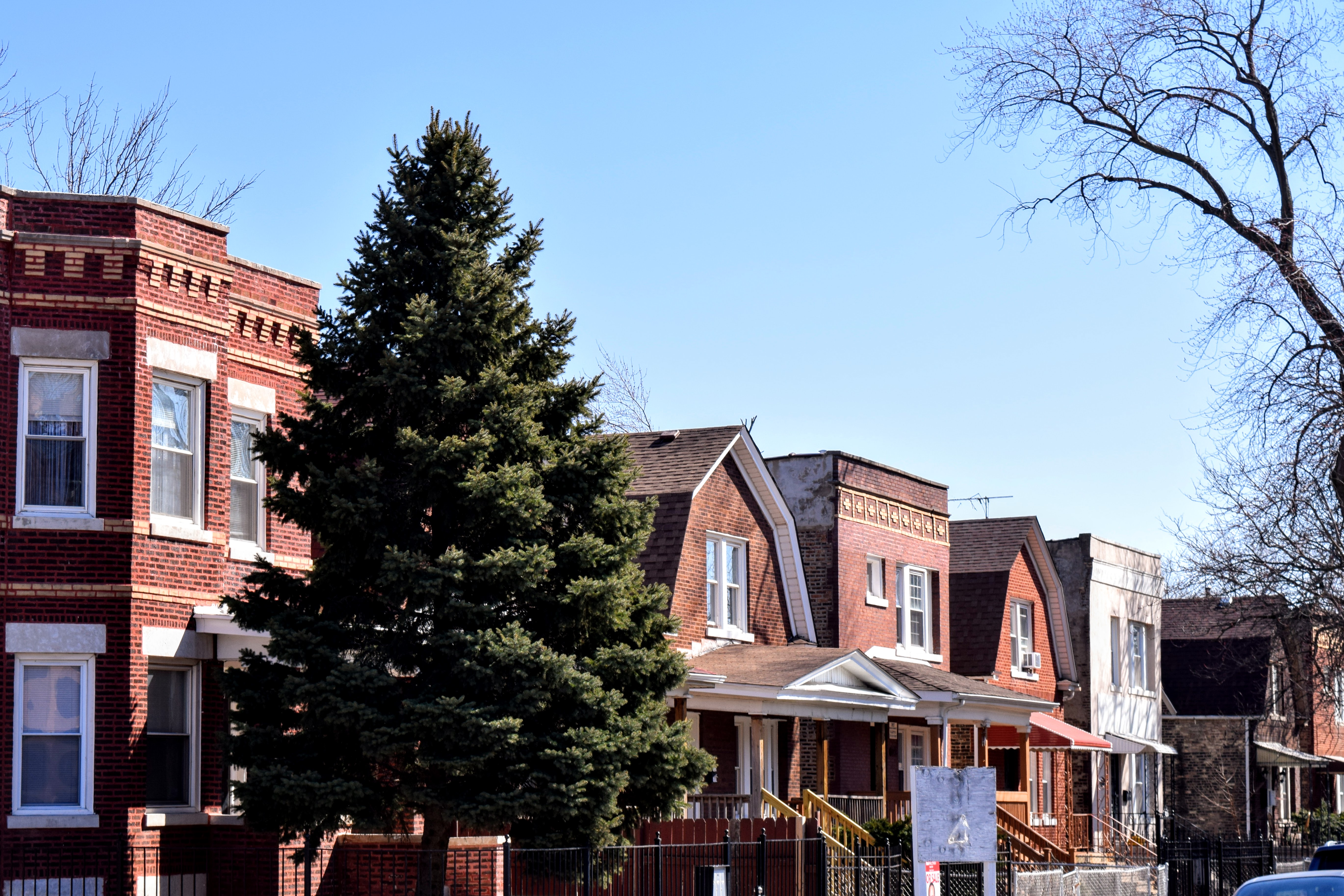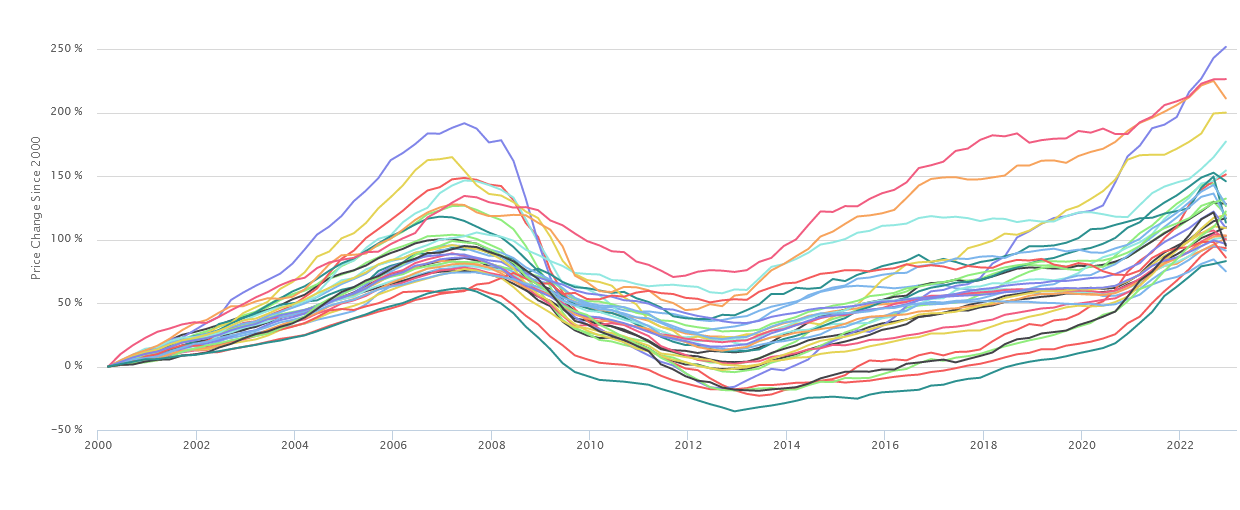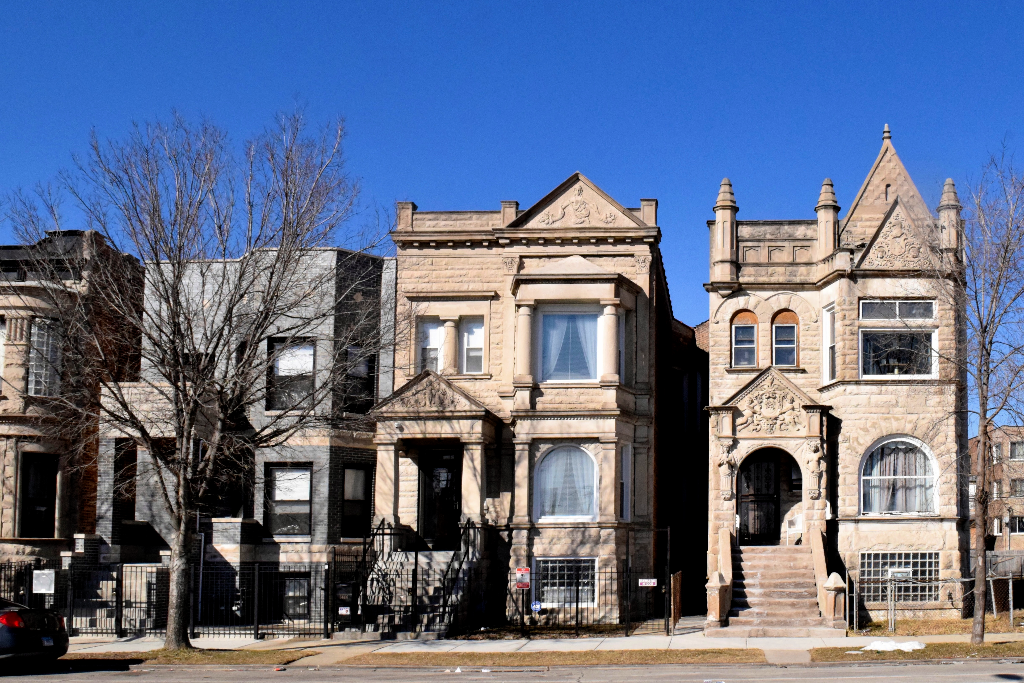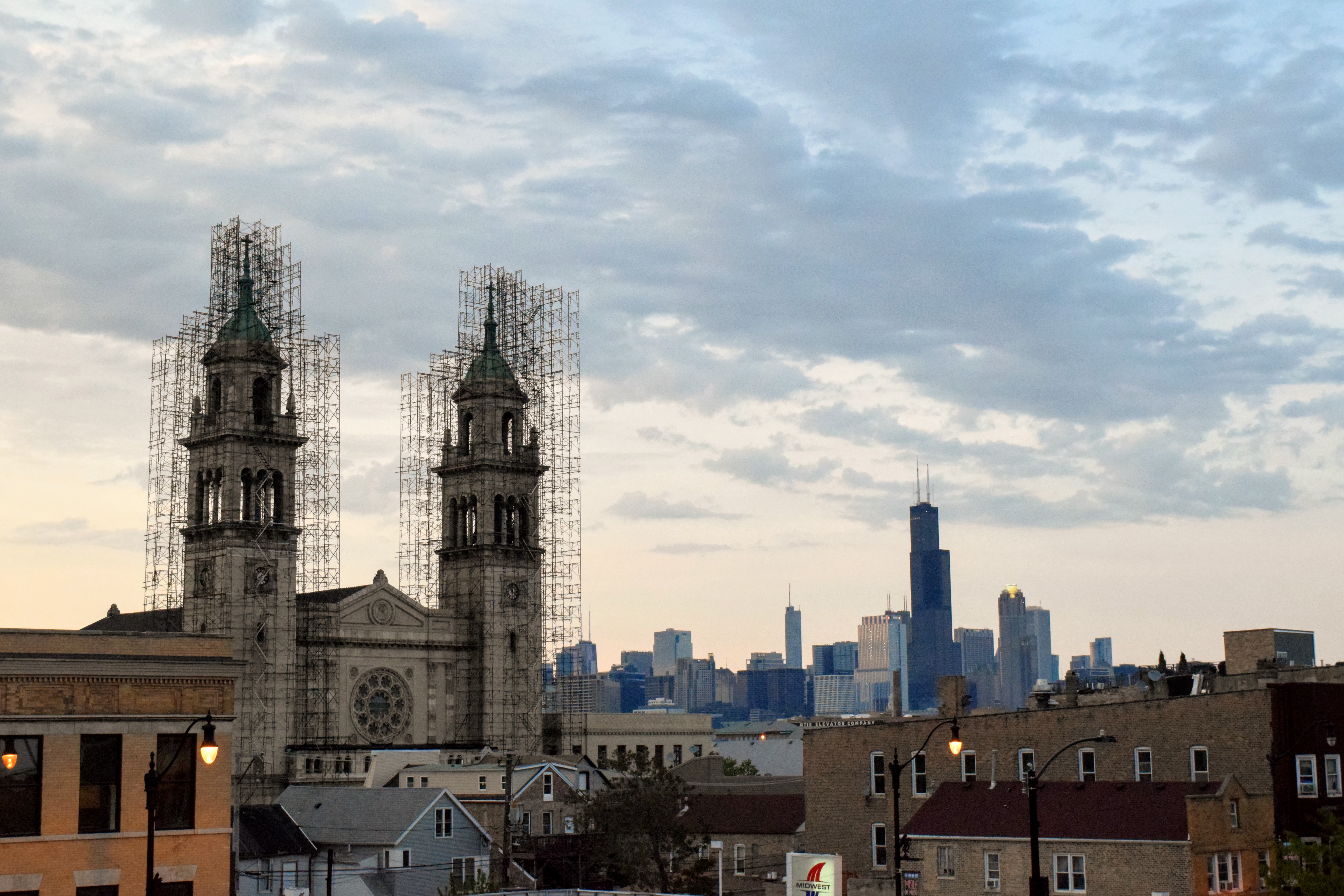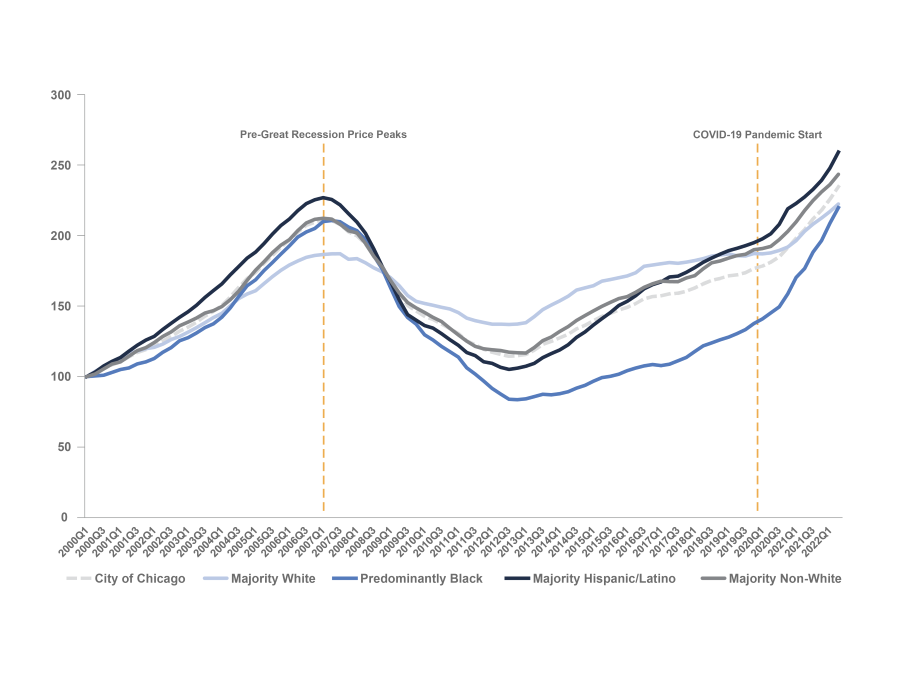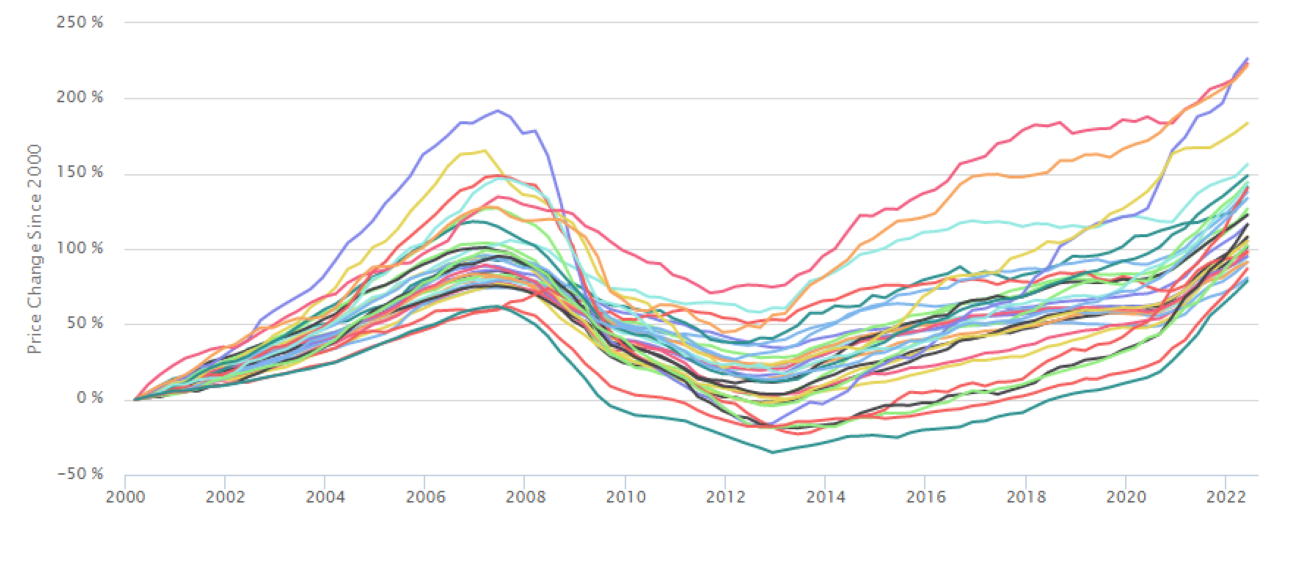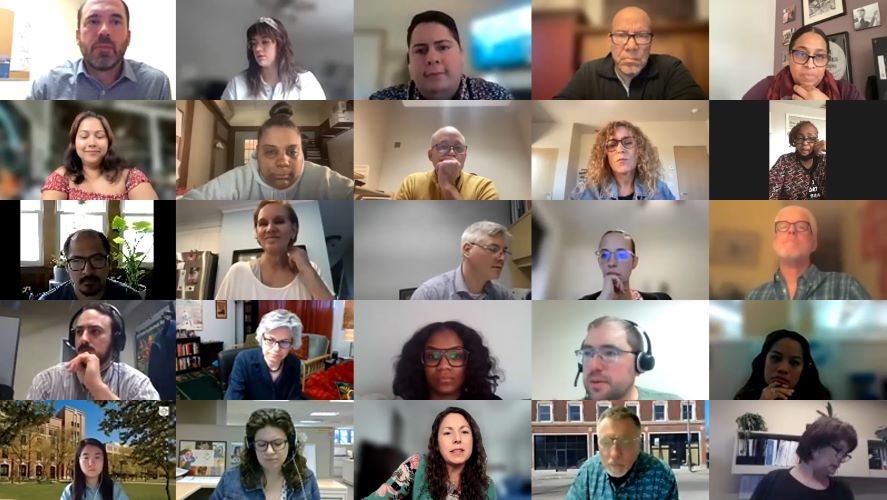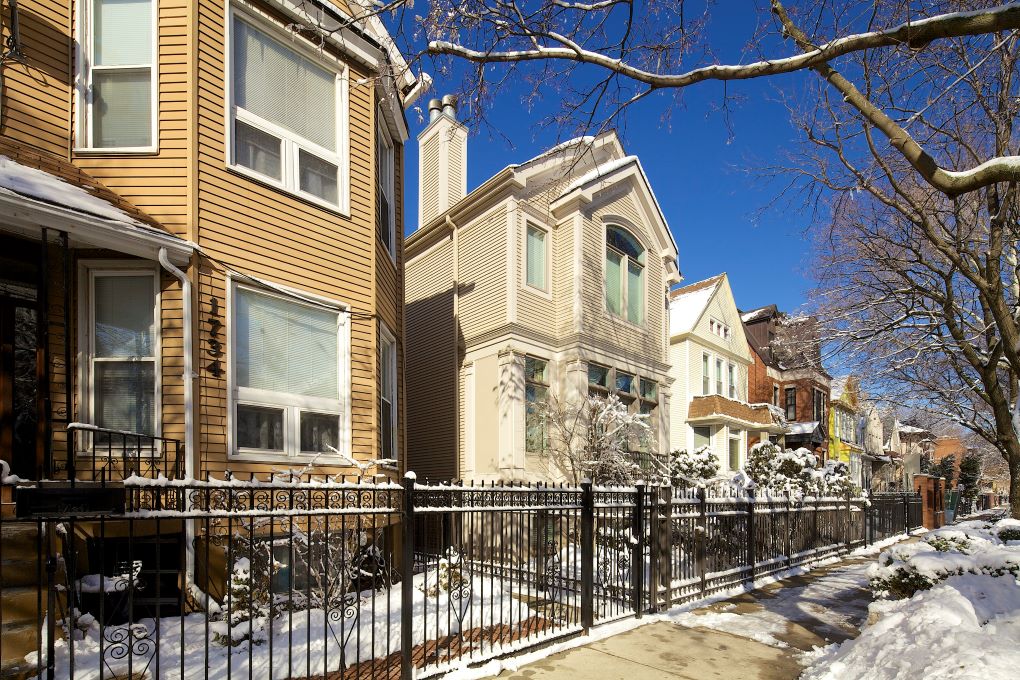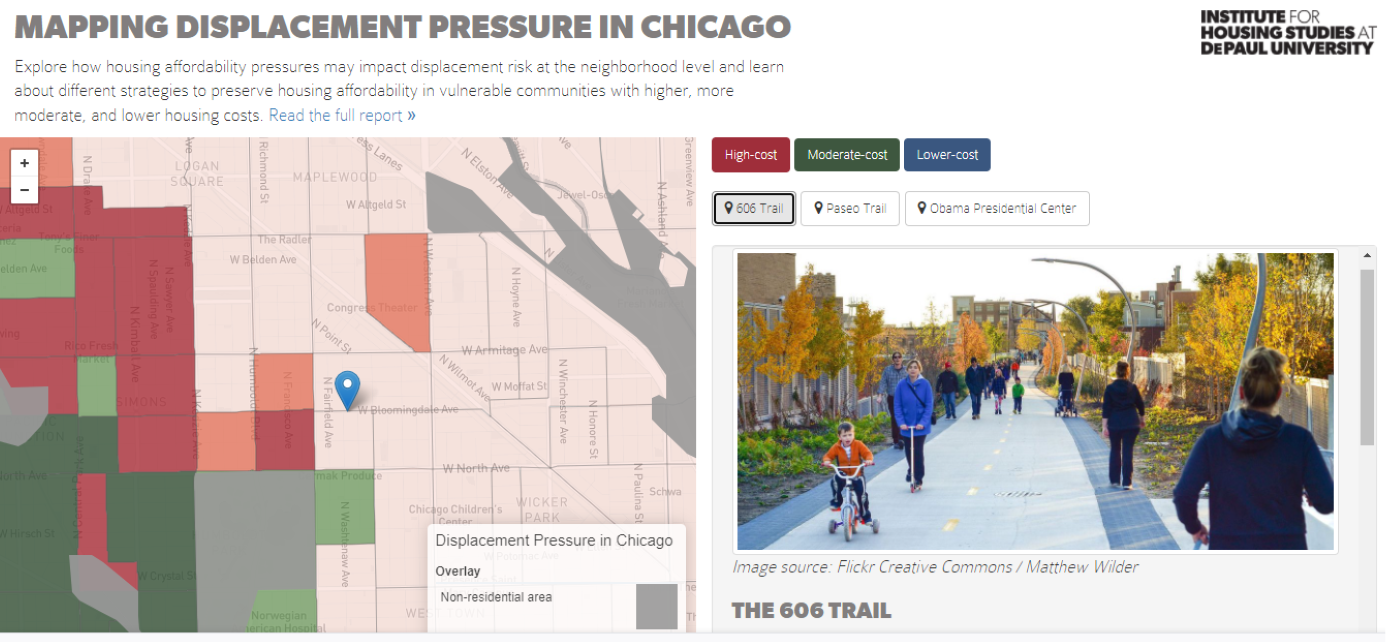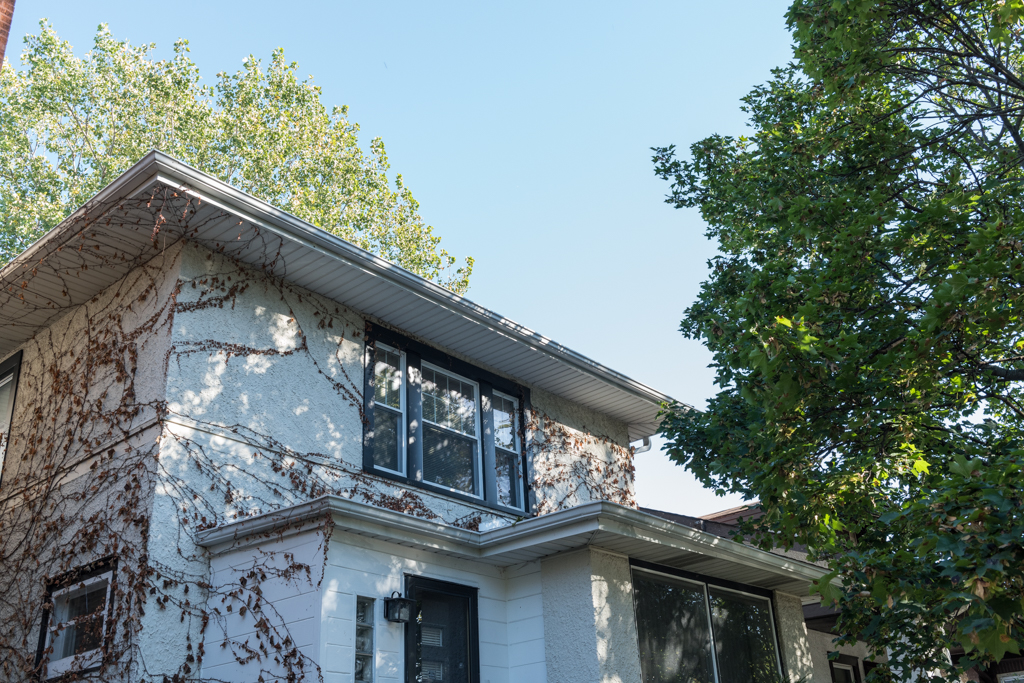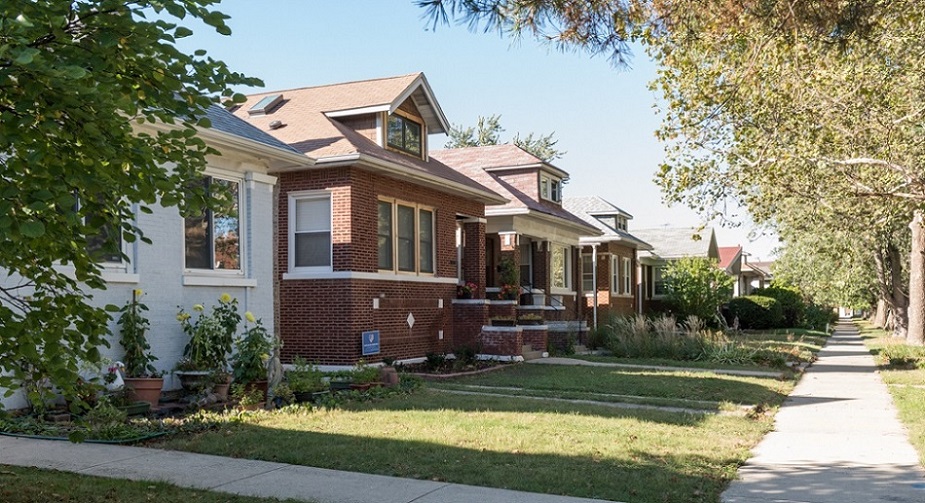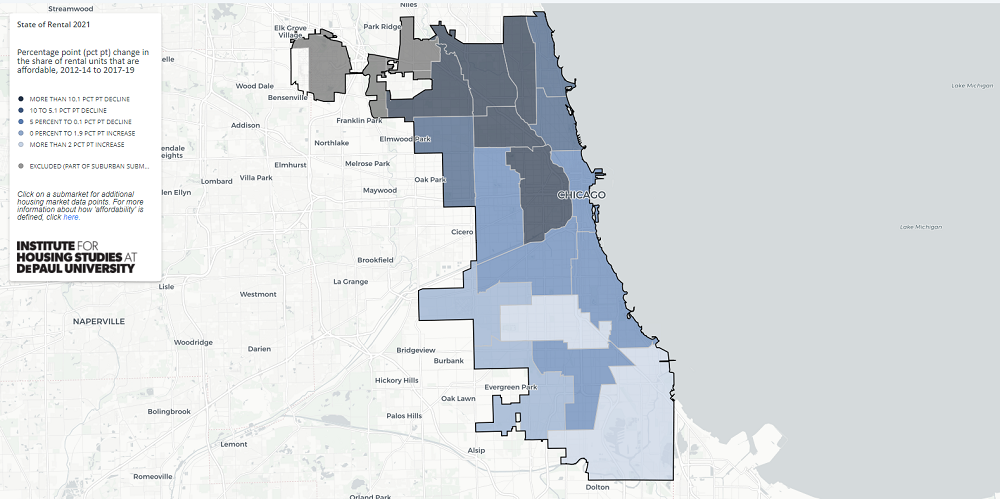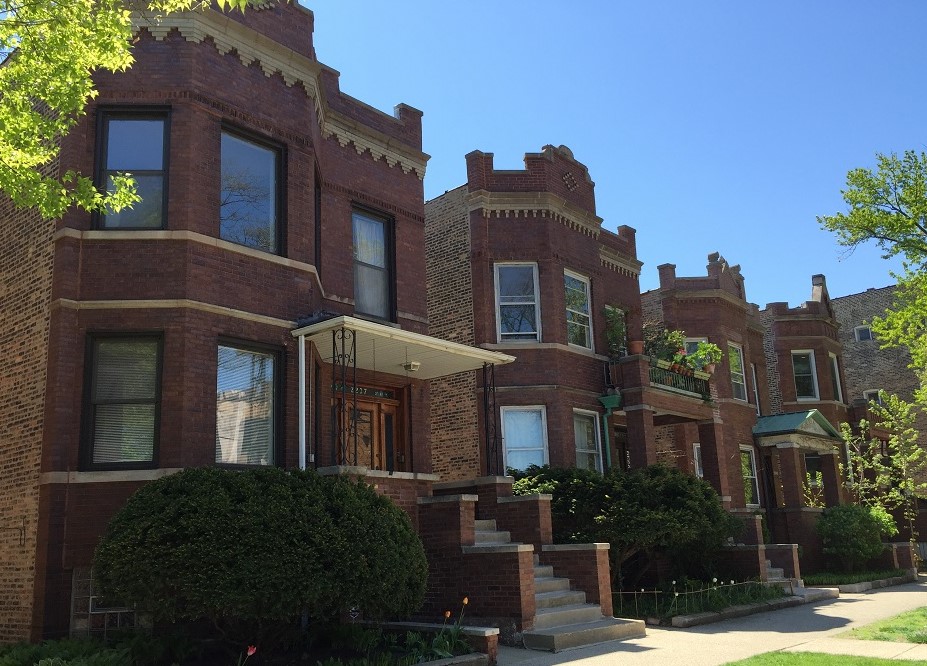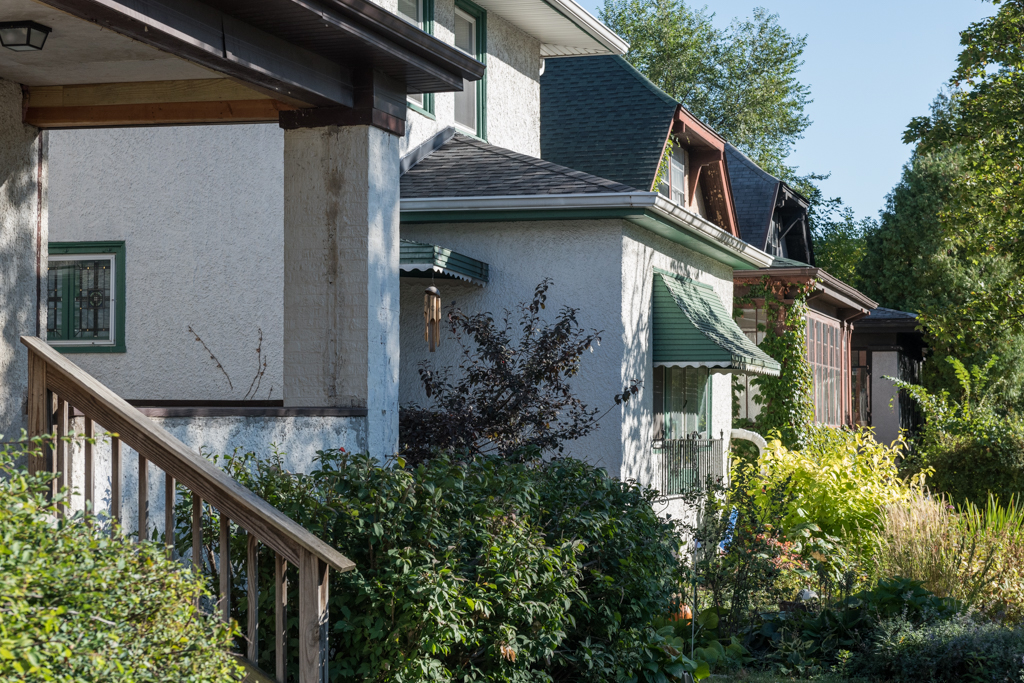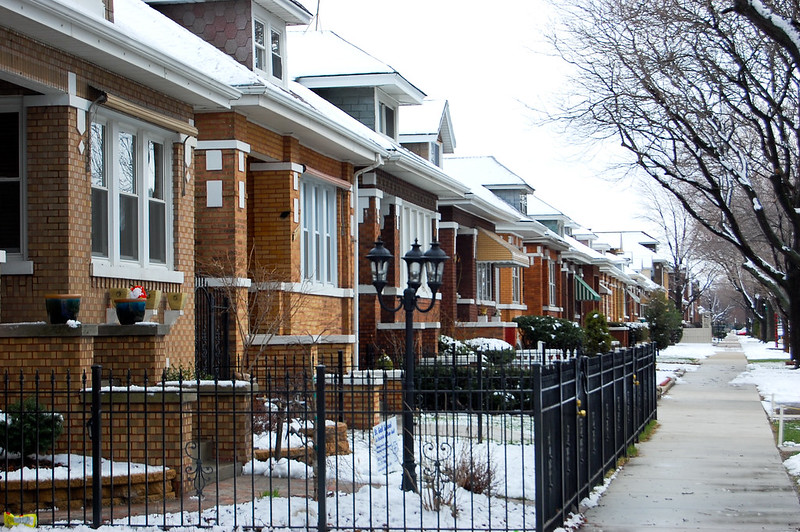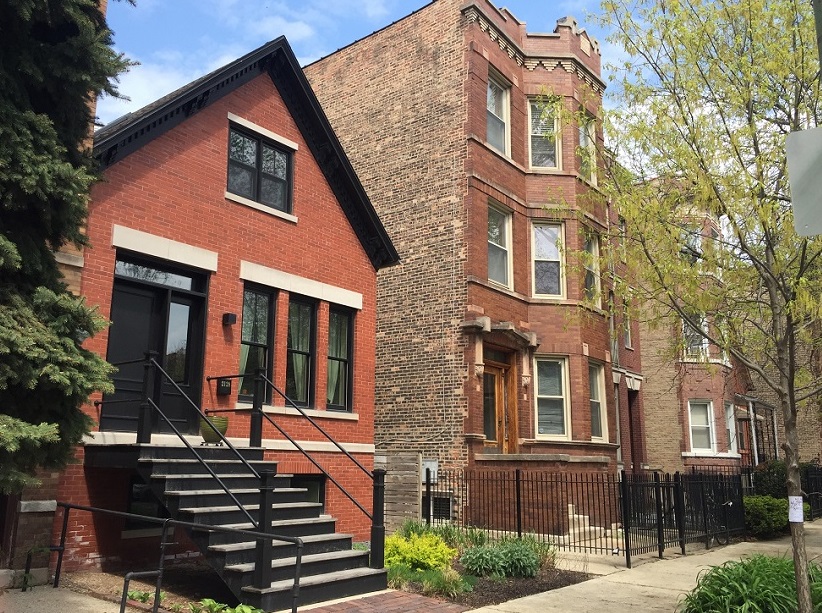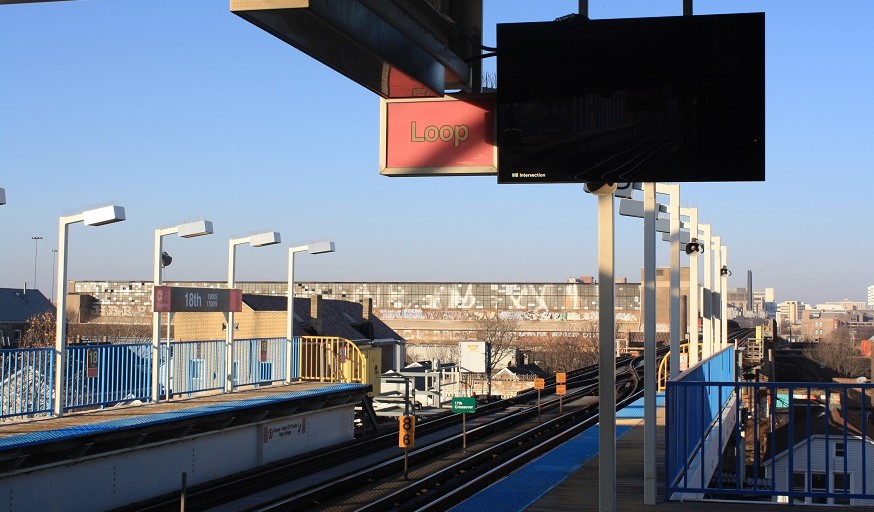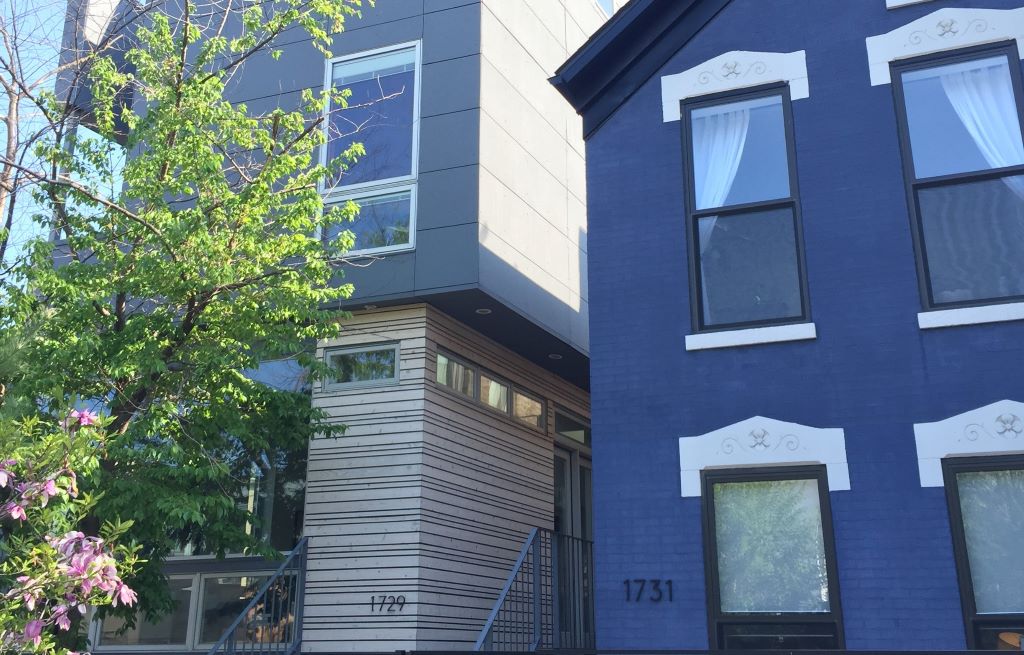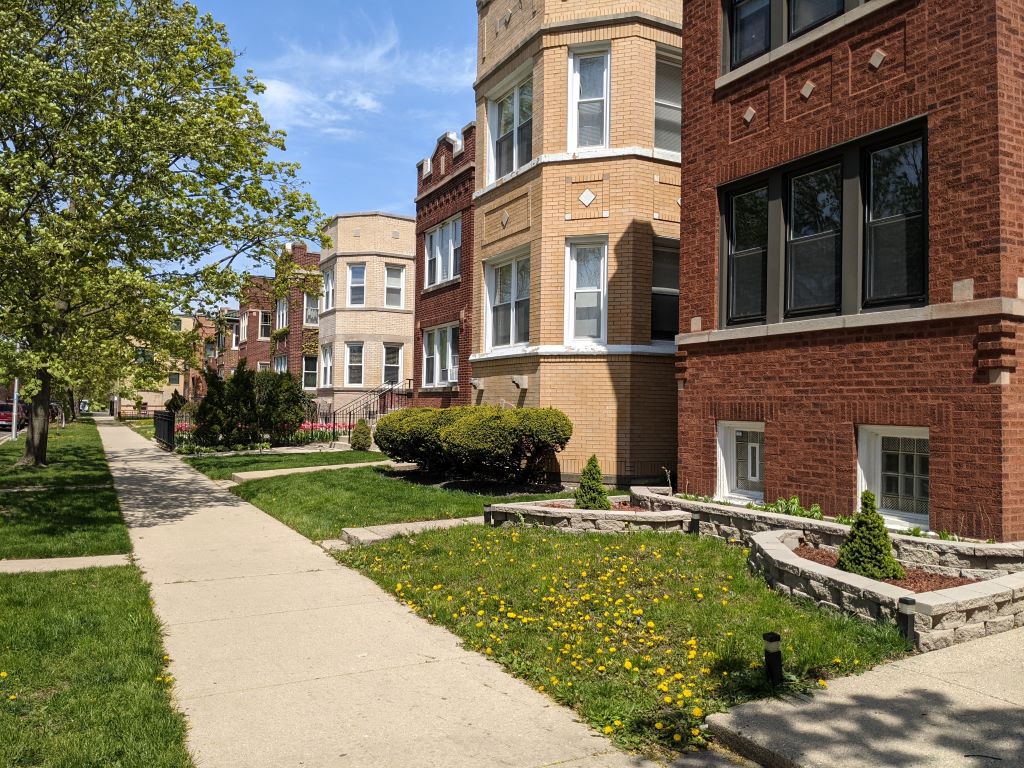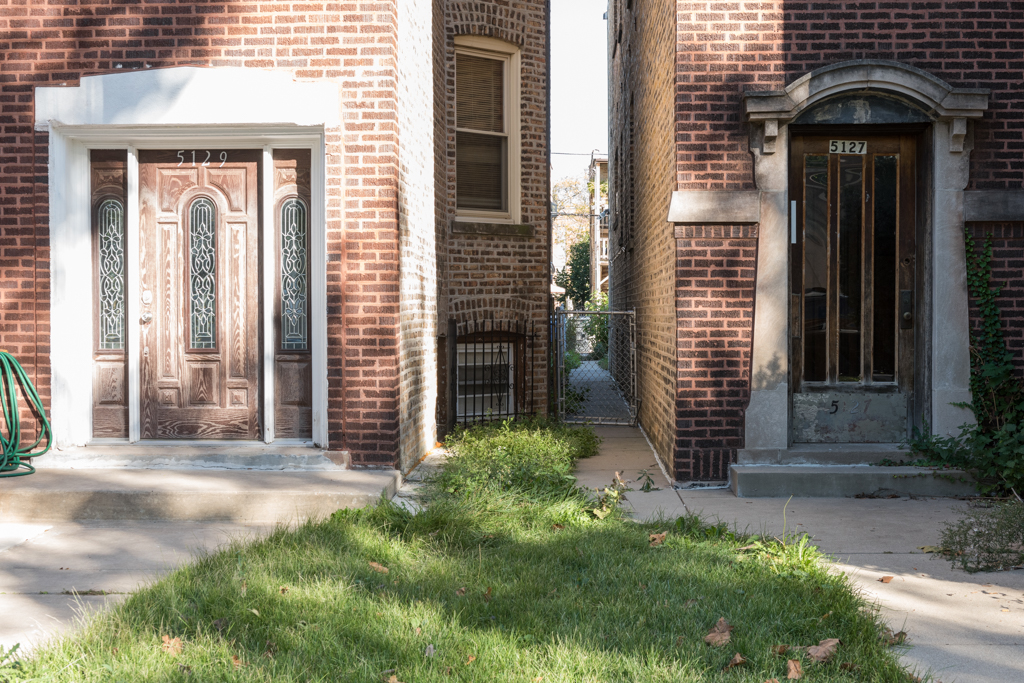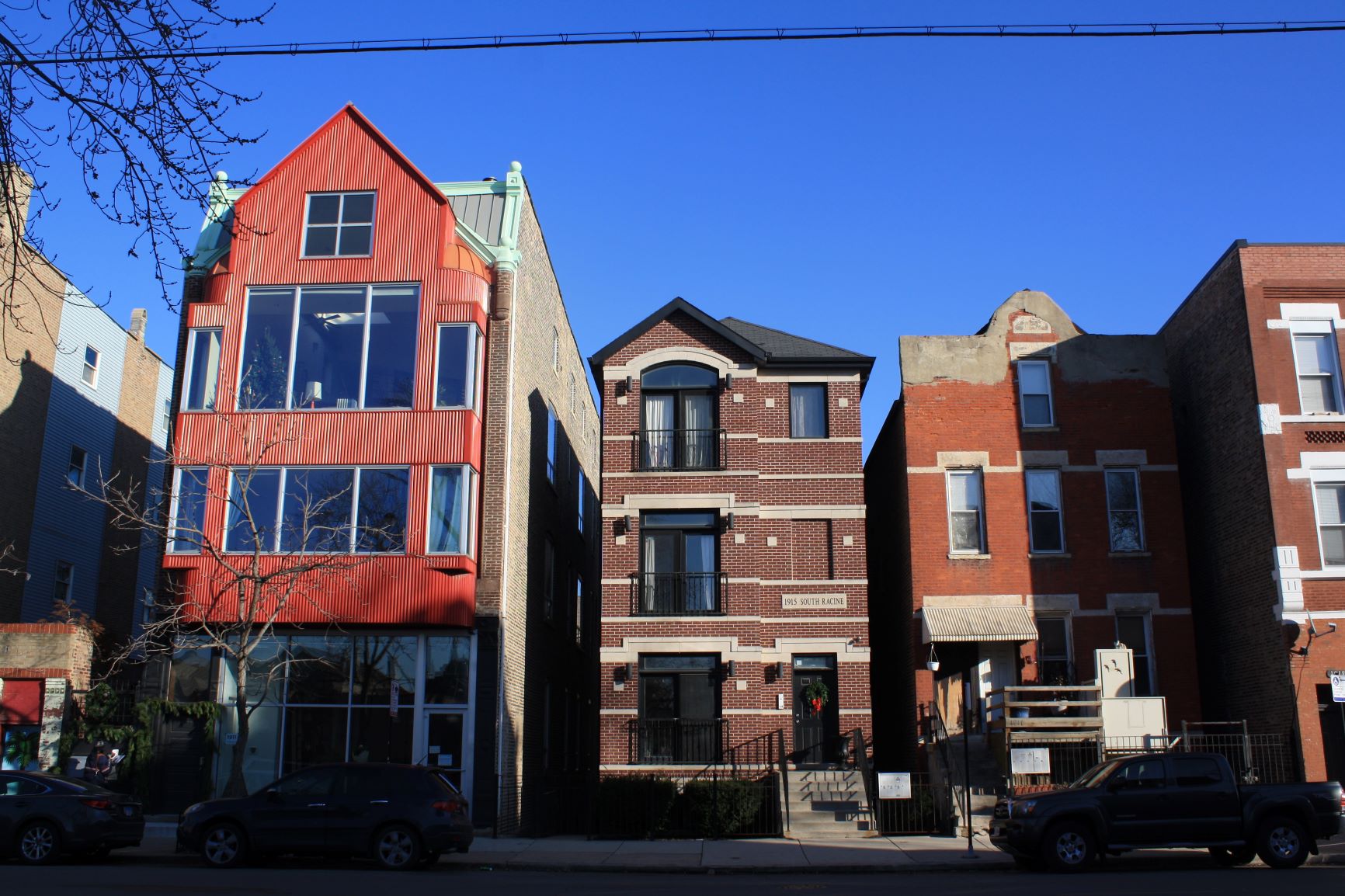The Institute for Housing Studies (IHS) is a research center based at DePaul University that provides analysis and data to inform affordable housing policy and practice. Read more »
Featured research
IHS Research Featured in HUD's Cityscape Journal
IHS is excited to announce that our research on the disappearance of 2 to 4 unit buildings in Chicago was published in the Spring 2024 issue of Cityscape!
Cook County House Price Index: Fourth Quarter 2023
This update of the Institute for Housing Studies (IHS) Cook County House Price Index reflects new 2020 submarket geographies, and highlights changing prices for single-family homes through the fourth quarter of 2023. Data are included for 17 City of Chicago submarkets and 18 submarkets primarily in suburban Cook County.
An Update to IHS’s Housing Market Indicators Data Portal
IHS recently updated its Housing Market Indicators data portal to include new data on neighborhood demographic and economic characteristics. These data will provide portal users with additional context to understand factors that may affect housing market activity in their communities.
Data Highlighting the ETOD Implications of Vacant Land Near Transit
As part of a recent collaborative project to understand the implications of vacant land near transit, IHS developed an in-depth analysis of City- and privately-owned vacant land near CTA train stations across Chicago. This report highlights data and analysis developed as part of this work.
A New Update to the Mapping Stories of Neighborhood Change Tool
IHS recently updated our Mapping Stories of Neighborhood Change mapping tool to include neighborhood news stories published in 2023 through 2024 mapped alongside our Mapping Displacement Pressure data. The mapping tool provides users with spatial, housing market, and demographic context to assess the potential implications of the activities described in each article.
Transfer on Death Instruments and Their Role in Estate Planning in Cook County
This data brief examines the role that transfer on death Instruments play in facilitating the transfer of real estate to heirs and provides data on the patterns of TODIs filed on homes with an active senior exemption in neighborhoods across Cook County.
Cook County House Price Index: Second Quarter 2023
This update of the Institute for Housing Studies (IHS) Cook County House Price Index highlights changing prices for single-family homes through the second quarter of 2023 in 16 City of Chicago submarkets and 17 submarkets primarily in suburban Cook County.
2023 State of Rental Housing in the City of Chicago
This release of the State of Rental Housing in the City of Chicago updates key data on changing rental demand, the supply of rental housing, and how these dynamics affect access to affordable rental housing for Chicago's lowest income households.
Key Housing Challenges in the City of Chicago
IHS research has indicated that the city's housing affordability crisis has some unique characteristics which shed light on why residents are struggling to find affordable rental housing, buy homes, and maintain their current residences.
Assessing Obstacles to Aging in Place for Chicago's Older Homeowners
This research brief discusses some of the key issues that emerged from these discussions and includes new data analysis highlighting the characteristics and spatial patterns of properties owned by older adults in Chicago.
Chicago Programs Helping to Expand the Supply of 2 to 4 Unit Properties in Black and Latino Neighborhoods
This blog reviews several programs in Chicago that showcase growing efforts to create a supply of affordable, for-sale housing in neighborhoods that have struggled for decades with disinvestment-related challenges.
Cook County House Price Index: Fourth Quarter 2022
This update of the Institute for Housing Studies (IHS) Cook County House Price Index highlights changing prices for single-family homes through the fourth quarter of 2022 in 16 City of Chicago submarkets and 17 submarkets primarily in suburban Cook County.
Recent Homebuying Patterns for 2 to 4 Unit Properties
This analysis documents the importance that 2 to 4 unit buildings play in homebuying for Chicago’s borrowers and neighborhoods of color and helps connect policy priorities around preserving 2 to 4s with those that advance homeownership and wealth-building for moderate- and middle-income Black and Latino households.
Exploring the Impacts of Rising Property Taxes in Changing Neighborhoods
This blog contextualizes recent research and reporting on property tax disparities in Chicago with IHS research on neighborhood house price changes and discusses how policy interventions designed to mitigate increased tax burdens have challenges of their own.
Understanding the Implications of Pandemic House Price Gains in Chicago’s Communities of Color
This blog updates data on house price trends in City of Chicago neighborhoods based on the neighborhood’s race and ethnic composition and focuses on how COVID-19 pandemic period price gains have impacted house prices in Chicago's communities of color.
Cook County House Price Index: Second Quarter 2022
This update of the Institute for Housing Studies (IHS) Cook County House Price Index highlights changing prices for single-family homes through the second quarter of 2022 in 16 City of Chicago submarkets and 17 submarkets primarily in suburban Cook County.
IHS Convenes Stakeholders to Discuss Older Adult Housing Needs
This blog discusses highlights from IHS's May 2022 convening of a diverse group of participants including affordable-housing advocates, the aging-in-place community, housing developers, community groups, government agencies and others to discuss the implications of IHS's recent report Housing Needs and Economic Conditions of Cook County’s Older Adults.
An Update to the Mapping Stories of Neighborhood Change Tool
IHS recently updated our Mapping Stories of Neighborhood Change mapping tool to include neighborhood news stories published in 2021 and 2022 mapped alongside our updated Mapping Displacement Pressure data. The mapping tool provides users with spatial, housing market, and demographic context to assess the potential implications of the activities described in each article.
Looking Forward: An Update on COVID-19 Housing Policy Interventions
This blog is a part of our series examining the impact of the COVID-19 economy on Chicago households and communities. This third installment discusses data, research, and programs to guide equitable recovery efforts as COVID-19 protections and assistance enacted during the first two years of the pandemic end.
Mapping Displacement Pressure in Chicago, 2021
IHS’s Mapping Displacement Pressure in Chicago project supports ongoing and future public investment decisions by creating a leading indicator to identify neighborhoods where vulnerable populations may be experiencing affordability pressures and displacement risk from increased housing costs.
Housing Needs and Economic Conditions of Cook County’s Older Adults, 2021
The development of impactful policy to address the unique housing needs of Cook County’s older adults requires local and timely data on changing conditions, informed by the data needs of issue-area stakeholders. This analysis leverages the local knowledge of roughly 20 Chicago-area organizations working on older adult housing issues to create a practitioner-focused resource on key demographic and socioeconomic conditions related to older-adult housing demand and economic and housing insecurity in Cook County.
Planning for the Housing Needs of an Aging Population
To inform our work on Cook County’s older adult housing needs and economic challenges, IHS tapped into the local knowledge of roughly 20 Chicago-area organizations to create a resource on key older adult demographic and socioeconomic trends. Read more here about the distinct challenges facing older adult renter and owner households in Cook County, as well as key policy challenges and information needs that emerged during our stakeholder engagement process.
2021 State of Rental Housing in Cook County
The newest release of the State of Rental Housing in Cook County updates key data on changing rental demand, the supply of rental housing, and how these dynamics affect access to affordable rental housing for Cook County's lowest income households.
The Preservation Lab Releases New Resources to Support NOAH Preservation Strategies
Chicago’s diverse stock of naturally occurring affordable housing (NOAH) faces a variety of challenges. A new report and resource clearinghouse from The Preservation Lab, an initiative co-led by the Institute for Housing Studies and The Preservation Compact, documents the risks and pressures facing NOAH buildings, owners, and tenants in different market contexts and provides resources and guiding principles to assist community stakeholders in developing tailored NOAH preservation strategies.
Data and Research to Facilitate Equitable Homeownership in Chicago
Facilitated by the Chicago Community Trust’s Protecting and Advancing Equitable Homeownership initiative, the Institute for Housing Studies at DePaul University (IHS) partnered with the Urban Institute to develop a data resource for Chicago practitioners, policymakers, and advocates working to reduce the racial homeownership gap. Read more about Chicago Housing Overview: Preserving Affordability and Expanding Accessibility here.
Building Community Data Capacity: The Southwest Organizing Project
For a decade, IHS has provided data and technical assistance to the Southwest Organizing Project (SWOP) to inform the organization’s programs, initiatives, and outreach in southwest Chicago. Read more here about how IHS data has helped SWOP target and rehabilitate vacant buildings after the Great Recession, distribute aid during the COVID-19 pandemic, and conduct targeted outreach to Southwest Chicago residents.
IHS Technical Assistance to Support Preservation of 2 to 4 Unit Properties in Chicago
This blog provides an overview of the current state of 2 to 4 unit housing in Chicago, new pilot programs directed at preserving multi-unit housing in Chicago, and IHS’s work in community partnerships over the years that have provided insight on the 2 to 4 unit housing market.
Using Data and Community Engagement Collaborations to Guide an Equitable COVID-19 Recovery
With support from Urban Institute's National Neighborhood Indicators Partnership, the Institute for Housing Studies partnered with Communities United and Elevated Chicago to engage community members experiencing disproportionate impacts from the COVID-19 pandemic. Read more here about how data and community-driven narratives can guide equitable COVID-19 response and recovery efforts in Chicago.
Patterns of Lost 2 to 4 Unit Buildings in Chicago
This analysis uses a unique data set to document the loss of the 2 to 4 stock in Chicago neighborhoods in an effort to understand the different ways that market forces put pressure on this key segment of the city’s housing market.
Characteristics of the 2 to 4 Stock in Chicago Neighborhoods
To inform ongoing policy conversations related to the preservation of 2 to 4 buildings in Chicago neighborhoods, this report updates key contextual data on the stock of 2 to 4s in Chicago, and includes new data on the characteristics of the stock, foreclosure impacts, and the importance of 2 to 4s in communities of color and for households of color.
Guest Blog: The Need for a Collective Approach to Preserving 2 to 4 Unit Housing in Chicago
This guest blog, co-authored by a group of Chicago housing organizations, responds to IHS's recent analysis on the importance of and threats to 2 to 4 unit buildings in Chicago. It emphasizes the disproportionate health and economic impacts of the COVID-19 pandemic across Chicago’s communities of color; the potential implications for the stability of Chicago’s 2 to 4 unit housing stock; and the urgent need for coordinated actions to address existing needs of families that rely on the affordability that 2 to 4 flats provide.
New Stories Added to Mapping Stories of Neighborhood Change Tool
IHS recently updated our Mapping Stories of Neighborhood Change mapping tool to include neighborhood news stories published in 2020 mapped alongside our updated Mapping Displacement Pressure data. The mapping tool provides users with spatial, housing market, and demographic context and to assess the potential implications of the activities described in each article.
Housing market indicators data portal
Search for, view, and download indicators of housing market health in the Chicago region, including foreclosure auctions & filing activity, mortgage activity, and property sales activity.
